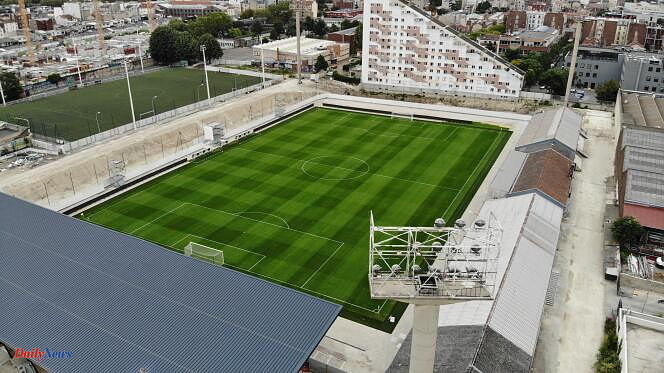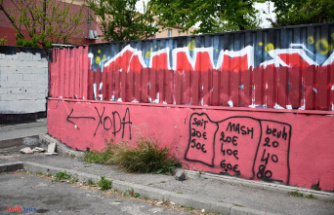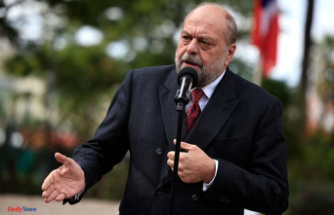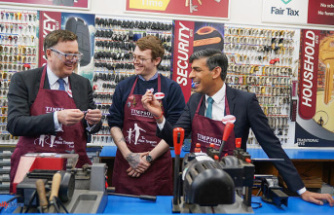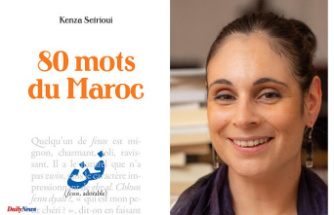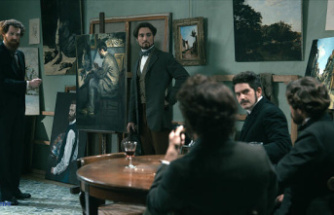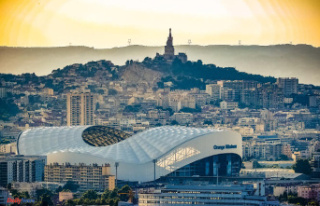In Saint-Ouen, in Seine-Saint-Denis, some football fans don't even have to leave their homes to applaud their team and add their chants to those from the stands. On match nights, when their team is playing at home, all they have to do is open the window to cheer the Red Star players loudly. These unique supporters live in Planète Z, a complex of one hundred and nine housing units built in the 1970s by architect Jacques Starkier. Triangular in shape, so that each level has an apartment with an open-air terrace, this building is located in the extension of the Bauer stadium lawn, on the south side. Housing and stadium are one.
And the architecture of the stadium reveals the history of sport. For Hélène Caroux, responsible for inventorying contemporary heritage within the Seine-Saint-Denis departmental council, the establishment of the Bauer stadium, one of the first stadiums built in France, clearly illustrates the growth of football and clubs in France during the 20th century. “When the stadium emerges, we still have fans who are just looking for a field outside of Paris,” she explains. At that time, the Red Star was a multi-sport club with running, tennis, etc. The players first trained in Meudon, then in Paris in the space which would be used for the construction of the Vélodrome d 'Winter, which they must therefore leave. » They then found a modest vacant lot, in a sparsely built and still cultivated area, in Saint-Ouen. This is the birth of the Paris stadium, renamed after the war after Jean-Claude Bauer, a resistance fighter who was shot during the war. Red Star, founded in 1909, has been based in Saint-Ouen at the Bauer stadium since 1922.
This historic stadium represents an opening onto the city and contributed to the attachment of the Audoniens (the inhabitants of Saint-Ouen). Like Gilles Saillant, 72, considered the historian and archivist of the place, who passionately lists all the articles published on the stadium. “Before, it was limited to one piece of land,” he says. Then there were improvements, with showers, changing rooms – the height of modernity at the time – and the first stands. They began to be enlarged around the 1930s, by covering the cement stands with a roof which sheltered the public. » Over the decades, makeshift stands were added, but never behind the cages.
This unique space, anchored in a neighborhood, has for years allowed both geographic and social proximity, with the integration of under-15s into the Red Star youth team. Steve Marlet played six years on the pitch at Bauer Stadium and, after an international career, he returned there. He now serves as advisor to the club president. “When I left in 1996, many renovation projects were left on the shelf. It's amusing to see today the old world, opposite, with this grandstand which will soon be destroyed, and the new world which awaits us, this new grandstand inaugurated. »
Because on Friday January 12, 2024, Saint-Ouen and Planète Z were celebrating: for the first match of the season, a new stand was finally inaugurated, the first step in a complete overhaul of the stadium, the culmination of decades of thwarted projects. This is because it was first necessary to resolve the question of the location of the stadium in the city, the market gardening areas having long since disappeared to make way for housing. The SCAU architectural agency and the real estate developer Réalités therefore worked on this particularity to imagine a transformation of the stadium into a low-tech stadium with ten thousand seats respecting a constrained budget. “This involved finding technologies and materials that allow us to save on materials,” comments architect Luc Delamain.
It was then necessary to create an innovative financial package. This is the other major plan that should revolutionize the Bauer stadium by 2026: opposite the Planète Z building, the “Bauer Box”, a set of commercial and residential buildings of some 30,000 square meters, should generate additional income. Estimated cost, 190 million euros, not counting the 50 million allocated to the stadium itself. The supporters, gathered in the stand, approve the project as a whole. They were involved in the decisions and obtained assurances from the manufacturer that no “naming” agreement would allow the stadium, nor their historic stand, to be renamed. The latter bears the name of Rino Della Negra, a former “Red Star” player and member of the Manouchian group, shot at Mont-Valérien in February 1942.
Season 3 of the “Archi interesting” podcast is produced on the occasion of the exhibition “Once upon a time the stadiums”, presented from March 20 to September 16, 2024 at the Cité de l’architecture et du patrimoine.

